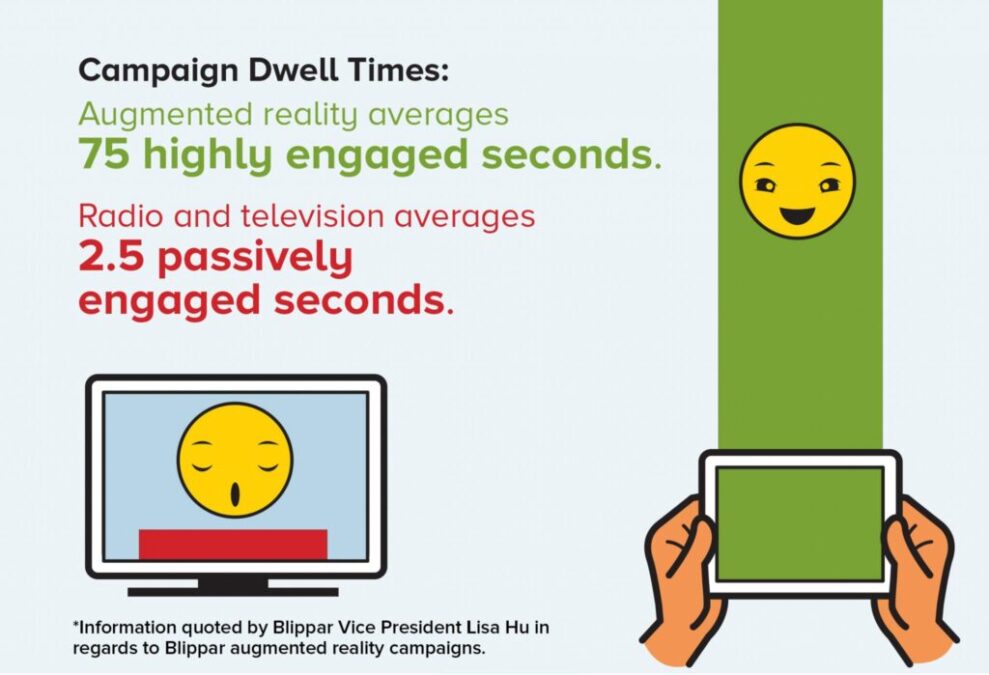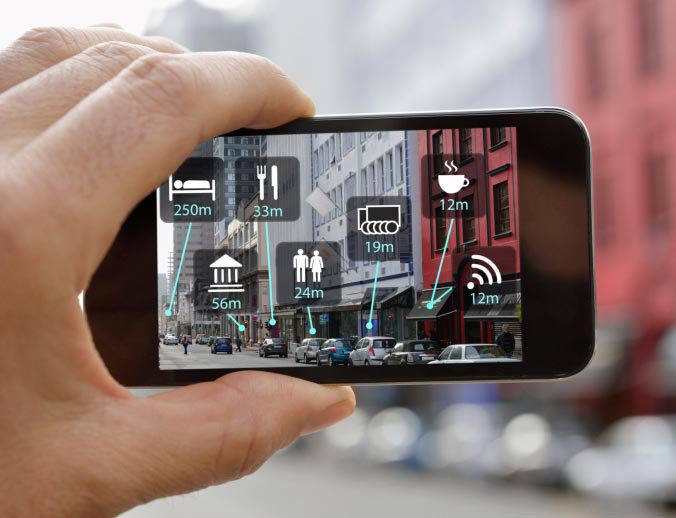If there’s one thing marketing and the technology industry have in common, it’s that they’re both always on the lookout for “the next big thing.” Whether it’s the next big strategy, the next big invention or the next big trend, marketers and technology leaders share the same drive for innovation. And right now, the next big thing is augmented reality.
Like its brother virtual reality, augmented reality (or AR) changes how we see the world around us—with one key difference. While virtual reality transports the user to another world, AR enhances the world we already inhabit. With super-imposed digitally rendered images, AR allows the user to have a heightened experience within their actual reality.
Though the technology is still new, AR has the potential to catch on in a big way. Take a look look at the numbers: while there were 118 million AR apps downloaded in 2012, that number is predicted to jump to 3.5 billion downloads by 2017—a gigantic leap in just five years. And speaking of leaps, perhaps you’ve heard of Magic Leap, the Google-backed startup raising enormous sums of money and doing some of the most innovative work in AR out there.
The limitless possibilities of this technology spells huge potential for the marketing world. Some big brands have already dipped their toes in the water, with the most famous coming from McDonald’s during the 2014 World Cup. Using their newly designed fry boxes, McDonalds allowed customers to download an app and play an AR soccer goal game that incorporated their real world surroundings as obstacles.
Several big name retailers have also embraced AR to provide their customers with an enhanced in-store experience, like the ability to try on clothes without going into a dressing room or test makeup without having to actually put it on your face. Most recently, Microsoft debuted their forthcoming HoloLens and aired a commercial that imagined how AR could impact the future of sports entertainment:
However, while all of the features and possibilities are exciting, the question remains: is augmented reality really a good investment for marketers?
The ROI of Augmented Reality as a Marketing Strategy
There’s no denying that using AR in your marketing campaigns has the ability to impress your target audience. However, beyond the simple “wow” factor, what kind of a return can you expect on your investment? Here are three areas where using augmented reality as a marketing strategy has the potential for a high return:
Increased brand awareness
Though it may be as a result of the aforementioned “wow” factor, bringing more attention to your brand is a benefit of AR that can’t be overlooked. Especially in these early days of functionality, the novelty of AR alone will bring increased awareness to your brand.
Increased customer engagement
According to one of the most popular augmented reality apps, Blippar, AR campaigns have an average dwell time of 75 highly engaged seconds—as opposed to the 2.5 passively engaged seconds radio and television ads tend to garner. This leads to a more engaged consumer base and more impactful interactions.

Improved customer experience
Integrating AR in your marketing allows you to bring more value to the customer and opens the door for an improved customer experience. This is expected to be an especially prevalent trend in the retail industry. For example, both Wal-Mart and Target are in the process of testing augmented reality apps that would provide the user with in-store navigation, allowing for faster shopping time and less frustration. This type of improved customer experience can lead to increased customer loyalty, higher retention numbers and more repeat sales.
Getting a Head Start in Augmented Reality Marketing
So, what can marketers who don’t want to be left behind do? We asked two leading AR experts for their advice.
According to Michael Meder, the Associate Creative Director at Pace, the power of augmented reality marketing is truly the user experience design—and preparing to embrace that approach is one way marketers can stay on top of the changing trends.
If augmented reality really takes off the way it looks like it will, you’re going to literally be in the head of your audience and you want that to be a valuable experience.
“If augmented reality really takes off the way it looks like it will, you’re going to literally be in the head of your audience and you want that to be a valuable experience,” Meder says. “It’s truly putting yourself in the shoes of the people you’re marketing to, so [marketers should] brush up on user experience and user experience design.”
Executive Producer Brian Bowen echoes Meder’s encouragement for marketers to begin preparing for how they’ll adapt now. “You don’t have to go big,” he says. “You test and you learn. Plan the space. If you adopt early and wisely, it’s much better than being late to the party and paying a premium price just to get in the door.”
While augmented reality might not be the next big thing today or even tomorrow, it is going to be big. Remaining aware of changing technology and making a plan for how to incorporate AR in your future marketing strategies can help your company keep from falling behind in an ever-growing marketplace.



